UP TO THE MINUTE
3 reasons to consider black metal roofing for residential homes

By Trevor Underwood, DECRA Metal Roofing.
Fifty years ago, black asphalt shingles roofs were the trend. But as times shifted, homeowners began choosing brown or gray shingles. Now, black roofs are back in style.
In the mid-1990s homeowners started wanting brown and gray shingles rather than the traditional black. This desire stemmed from the fact that these colors looked like the high-end, expensive wood shake roofs. But black roofs are coming back! The first thing to note is that, even as people shift back to black, these roofs are no longer made of asphalt shingles — they are made of long-lasting, energy-efficient and versatile metal.
The market for metal roofing has expanded from a share of 12% in 2019 to 18% in 2022. The experts at DECRA Metal Roofing cite the expense of the traditional asphalt shingles in combination with the more modern aesthetics of metal roofing as the cause for this shift. If you have a client that has questions about the logistics of metal roofing, the metal experts at DECRA have the answers about everything from temperature to appearance.
1 - Are black metal roofs hotter than other types of roofs?
It makes perfect and logical sense to assume that a black metal roof will be hotter than other types of roofing materials. But this is one of those myths about metal roofing that is in fact, a myth.
Metal roofs are actually one of the most energy-efficient roofing materials, thanks to the inherent reflectivity and emissivity of metal.
Reflectivity
Metal is inherently reflective. In the context of roofing, this means that a metal roof will reflect heat up and away from the home. Cheap or low-quality roofing materials, such as asphalt shingles, have extremely poor reflectivity and will absorb and retain heat like a sponge.
Asphalt shingles retain so much heat that their temperature can spike up to 60 degrees higher than the surrounding air. For example, asphalt shingles can reach 140 degrees on an 80-degree day when exposed to direct sunlight.
Metal roofs, on the other hand, reflect up to 70% of the sun's energy back up into the atmosphere and can save homeowners up to 40% on cooling costs. In fact, a 2019 study showed that stone-coated metal roofing increased energy efficiency by up to 48.7% compared to asphalt shingles.
Emissivity
The conductive properties of metal make it extremely efficient at emitting heat. This means that when a metal roof is exposed to sunlight, the heat is rapidly dispersed across the metal surface before being released back into the atmosphere.
The way metal roofs are installed also contributes to their energy efficiency.
Installation
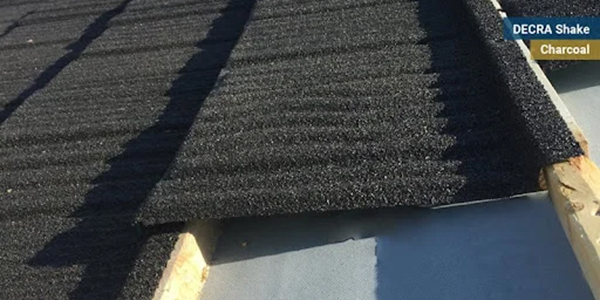
A well-ventilated roof allows hot air to escape while facilitating the flow of cooler air to enter underneath. Roofs that are installed on battens create a critical air gap between the roof deck and the roofing material that will keep the home cooler.
This airspace is essential for keeping the home cool and preventing heat from building up in the attic. And since metal roofs can be installed using battens, cool air is able to easily flow under the roofing material.
So, to answer the question, “Are black metal roofs hotter than other types of roofing?” The answer is no. Metal roofs in any shade or color are your best bet for energy efficiency and keeping your home cooler due to the inherent properties of metal.
If energy efficiency is a top priority, stone-coated metal roofing is often the best choice. Stone-coated metal roofs have infrared pigments that re-emit up to 90% of solar radiation back into the atmosphere, a performance acknowledged by the U.S. Department of Energy.
2 - Do black metal roofs work well with solar panels?
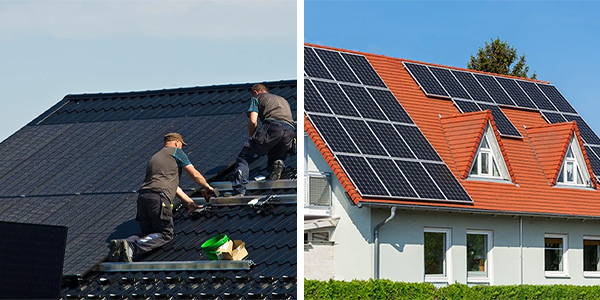
Demand for solar is at an all-time high as both energy costs and government incentives for clean energy rise. When considering solar, it is important to ensure that the roof is well-suited for installing the panels.
Solar panels require a strong, long-lasting roofing material with excellent load-bearing capacity – and metal roofs fit the criteria perfectly.
- Metal roofs have one of the longest lifespans of any roofing material, typically lasting between 40 to 70 years. Given that the typical lifespan of solar panels is between 25 to 30 years, it is critical to choose a roof that will last longer than the solar panels. If a roof needs to be replaced before the solar panels, homeowners are forced to deal with the costly and risky process of removing and reinstalling solar panels. This is a frequently encountered issue with asphalt shingles since they need to be replaced as often as every 12 years.
- Metal roofs offer high tensile strength and excellent load-bearing capacity, crucial attributes given that a typical set of 20 solar panels adds approximately 800 pounds to your roof.
Metal roofing and solar panels pair extremely well together, for both functional and aesthetic reasons.
A black metal roof offers a cohesive, sleek appearance when combined with solar panels since the solar panels blend in with the black roofing material.
3 - What will a black metal roof look like on my home?
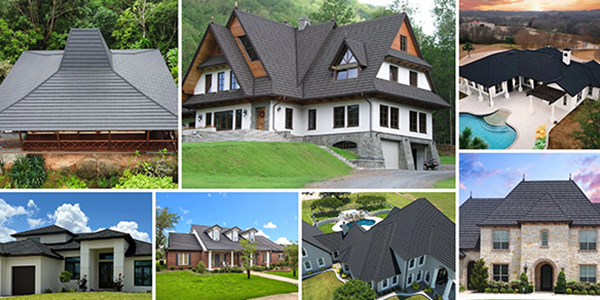
Speaking of looks, it is important to note that most black metal roofs you see are of the standing seam variety, characterized by raised seams and an industrial aesthetic.
Many homeowners are surprised to learn that metal roofing does not have to look industrial. For instance, stone-coated metal roofing replicates the look of traditional roofing materials so well that most people do not even realize that they are looking at a metal roof.
Unlike standing seam metal roofing, stone-coated metal roofing is a type of metal roofing that offers a range of styles that provide industrial strength without industrial aesthetics.
Stone-coated metal roofing achieves the same look as traditional roofing materials, such as asphalt shingles, classic clay tiles or wood shake. From colonial to craftsman architecture, the design versatility of stone-coated metal roofing makes it suitable for any style home.
Original article source: DECRA Metal Roofing
Learn more about DECRA Metal Roofing in their Coffee Shop Directory or visit www.DECRA.com.













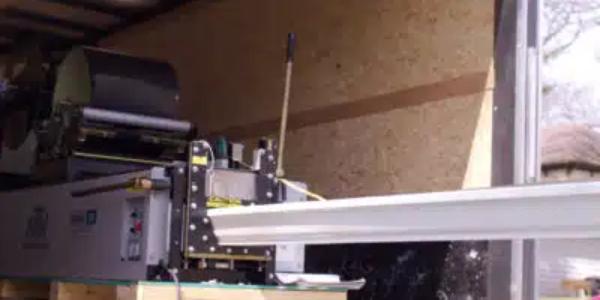
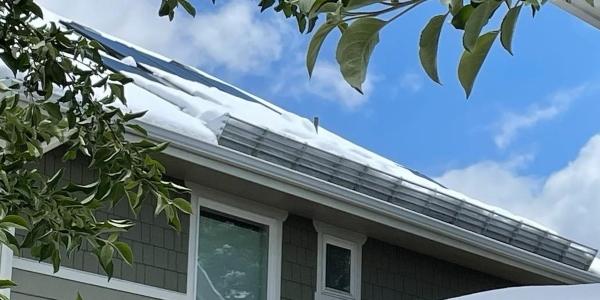




Comments
Leave a Reply
Have an account? Login to leave a comment!
Sign In